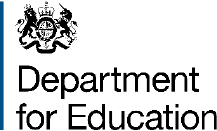
MUSIC AND DANCE SCHEME (MDS): THE MANUAL
NOTES OF GUIDANCE FOR SCHOOLS, CENTRES FOR ADVANCE TRAINING
AND PARENTS
This guidance is provided for organisations participating as providers in the National
Grants Scheme from the academic year 2022/23. It covers the determination of whether
applicants are eligible to hold a grant, information on relevant income and how to
calculate and extra information on elements of the application form (MDA/NGMD1).
The administrative and financial framework for the scheme is laid down in a document
entitled the “Music and Dance Scheme” made under arrangements pursuant to sections
14 to 17 of the Education Act 2002.
The Department (DfE) has specified, in relation to the National Grants Scheme, that
application form MD1/NGMD1 must be completed by parents for the purposes of
assessing eligibility under the scheme. MD2/NGMD2 has been specified for use by
schools/CATS in claiming grant from the National Grants Administration Centre (NGAC)
on behalf of the children/young people holding the national grants.
The MDS national grants are for young musicians and dancers with exceptional
potential and dedication. The grants are for those children and young people who do
not have the financial means to access the best available training. In making such grants
available to individual students, the needs of the individual child must be put first.
These needs should be spelled out by CATs in individual training plans (ITPs), and will
have to be agreed by the student, teachers, parents and providers.

Introduction
1. The aim of the Music and Dance Scheme (MDS) is to help identify, and assist,
children with exceptional potential, regardless of their personal circumstances,
to benefit from world-class specialist training as part of a broad and balanced
education, which will enable them, if they choose, to proceed towards self-
sustaining careers in music and dance.
2. The Department for Education provides grants, pursuant to Section 14 Education
Act 2002, to the schools and Centres for Advanced Training (CATs) set out below,
in respect of:
A. eligible means-tested, contribution-based, fee remission and
B. eligible travel and uniform grants provided by the school,
for the education and training of exceptionally talented children and children
with exceptional potential.
3. Fee, and travel and uniform grants, provided by the school up to the amounts set
out in their individual Grant Offer Letters, calculated by reference to the parents’
relevant income, will be eligible where the pupil meets the age and
nationality/residency conditions set out below.
4. What will be considered ‘relevant income’ for means-testing purposes of the
scheme is set out below.
5. The scheme covers the fee, and travel and uniform grants, up to the amounts set
out in individual Grant Offer Letters, provided by the following schools and
Centres for Advanced Training (CATs):
Schools
Music
• Chethams School of Music (Manchester)
• The Purcell School (Bushey, Hertfordshire)
• Wells Cathedral School (Somerset)
• Yehudi Menuhin School (Surrey)
Dance:
• Elmhurst Ballet School (Birmingham)
• The Hammond School (Chester)
• Royal Ballet School (London)
• Tring Park School (Hertfordshire)
Centres for Advanced Training
Music
• Aldeburgh Young Musicians (Suffolk)
• Birmingham Conservatoire (Birmingham)
• Centre for Young Musicians (London)
• Guildhall School of Music (London)
• Royal Academy of Music (London)
• Royal College of Music (London)
• Royal Northern College of Music (Manchester)
• Sage (Gateshead)
• Sheffield Music Academy (Yorkshire)
• South West Music School (Bristol)
• Trinity College of Music (London)
• Yorkshire Young Musicians (Leeds)
Dance
• Dance East Academy (Ipswich)
• DanceXchange (Birmingham)
• Dance4 (Nottingham)
• Dance City Academy (Newcastle)
• London Contemporary Dance School (London)
• Lowry Dance (Manchester)
• Swindon Youth Dance Academy (Wiltshire)
• Trinity Laban (London)
• Yorkshire Young Dancers (Leeds)
Age eligibility
6. To be eligible for an aided place in an academic year, a pupil must have reached
the age of 8 for music schools and 11 for dance schools on or before the 31
st
August following the beginning of the first school year in which the pupil takes
up an aided place.
7. Pupils taking up an aided place at a CAT for the first time should not be older
than 15 on 1
st
September at the beginning of the school year they take up their
place (although exceptions can be made), and no pupils should be over 18 on
commencement of the course of training. Please check that these requirements
are met and, in the case of any child who will be over the age of 16 on first entry,
contact DfE. Please note that if a child over the age of 16 is simply transferring
from one CAT to another, there is no need to contact DfE for permission. What
matters is the child’s age on first entry to CAT training, not on first entry to your
institution.
8. Pupils are not eligible for grant support after the end of the school year in which
they reach the age of 20.

9. CAT pupils should be full-time registered pupils at a maintained or independent
school or college in the UK or be “home educated” (i.e. educated at home by
parents or guardians). NGMD1 asks for details of the child’s current school or
college, as well as for details of the school or college the child will be attending
from September 2022.
Residency eligibility
10. To qualify for an aided place, the child must:
A. To take up an aided place at a school, have been ordinarily resident in the
British Islands throughout the two-year period immediately preceding 1
st
January in the calendar year in which the pupil will take up an aided
place, or,
B. To take up an aided place at a CAT, have been ordinarily resident in the
British Islands for a period of three years immediately before taking up
the grant; or
C. be an EEA national –
i. who has, to take up an aided place at a school, been ordinarily
resident in the EEA or Switzerland throughout the two-year period
immediately preceding 1
st
January in the calendar year in which
the pupil will take up an aided place, or, to take up an aided place
at a CAT, been ordinarily resident in the EEA or Switzerland for a
period of three years immediately before taking up the grant; and
ii. is a child who is, or whose parents are, entitled to equality of
treatment as regards selection for an aided place by virtue of
Article 7(2) or (3) or Article 12 of Council Regulation (EEC) No
1612/68 on Freedom of Movement for Workers within the
European Community
1
, as extended by the EEA Agreement and
Article 9(2) or (3) of Annex I to the Switzerland Agreement
2
; or
D. to qualify for an aided place at a school or CAT, be a national of a member
state of the European Union –
i. who has attained the age of sixteen years, and
ii. who has been ordinarily resident in the EEA or in Switzerland
throughout the period of three years preceding the first day of the
first academic year of the course; or
1
OJ No. L257, 19.10.68, p.2 (OJ/SE 1968 (II) p.475 #
2
signed at Luxembourg on 21 June 1999 (Cmnd 4904) and which came into force on 1 June 2002

E. be a refugee or the child of a refugee who has not been ordinarily resident
outside the British Islands since the child (or parents, as the case may be)
was recognised as a refugee or granted leave to enter or remain in the
British Islands; or
F. be a child granted special “Calais Leave” following their transfer from
Calais in October 2016;
3
or
G. be a child who relocated to the UK under section 67 of the Immigration
Act 2016
4
.
11. A child shall be treated for the purposes of paragraphs 10(a) and 10(b) as having
been ordinarily resident in the British Islands or in the European Economic Area
if he would have been so resident but for the fact that his parent is or was
temporarily employed outside the British Islands or the European Economic
Area or Switzerland during any part of the period mentioned in those
paragraphs.
12. For the purposes of paragraph10), a child who is resident in a State which
became a Contracting Party to the EEA Agreement on a date later than the
beginning of the two year period mentioned in that sub-paragraph, shall be
treated as having been ordinarily resident in the European Economic Area for
that period if he has been so resident in the said State or elsewhere in the
European Economic Area throughout the period of two years preceding the
relevant date.
13. The term "British Islands" refers to: The United Kingdom, the Isle of Man and the
Channel Islands.
14. For students currently MDS students looking to continue into academic year
2022/23 (that have not been living in the British Islands for 2 years) They will
need ”settled” status or “pre-settled” status to remain eligible.
15. For new MDS students that have not been resident in the British Islands, they
will need “settled” or “pre-settled” status. If they have not received this status EU
students will be treated as having the same status as non-EU students.
3
The term ‘Calais leave’ is a special type of leave granted to those were brought to the UK as part of
the Calais clearance exercise between October 2016 and July 2017, who were under the age of 18 at
the time, and who had recognised family ties in the UK
4
S67 provided for arrangements to relocate to the United Kingdom and support a specified number of
unaccompanied refugee children from other countries in Europe
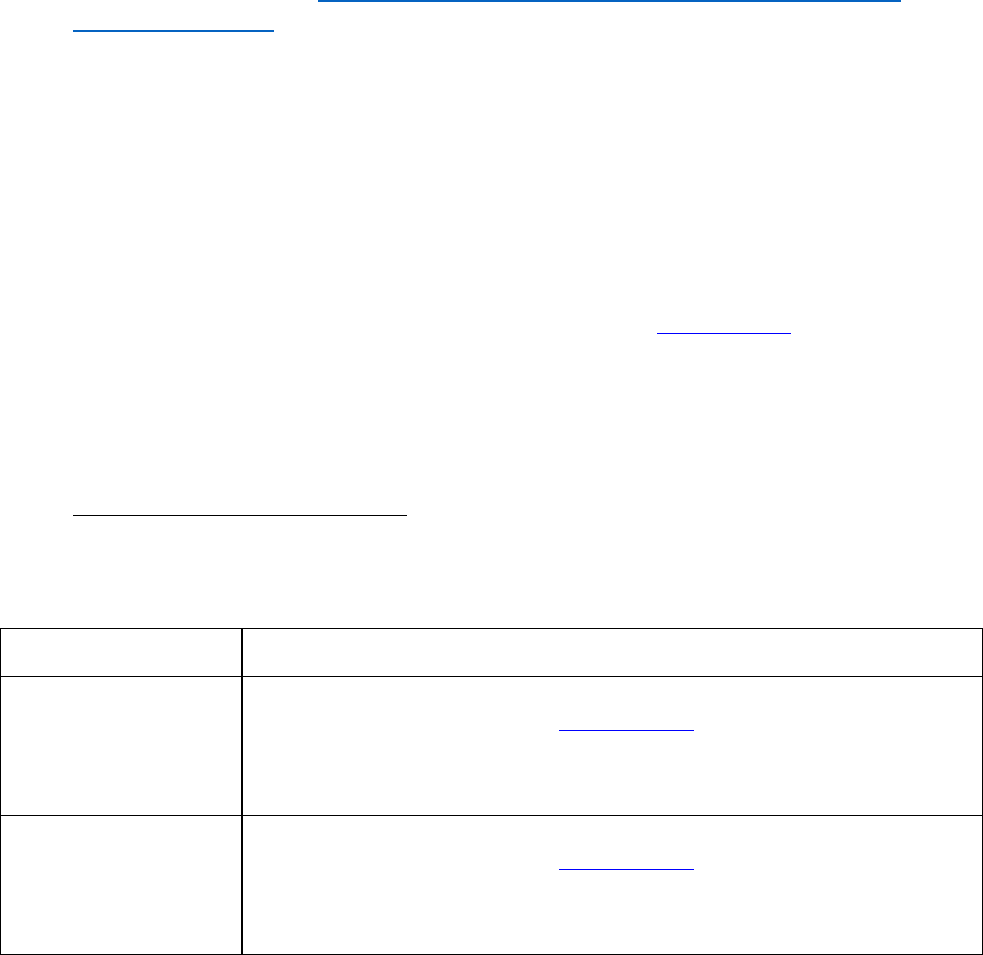
Pupil identifiers
There are three key pupil identifier numbers being asked for: 1) unique pupil numbers
(UPN); 2) Unique Learner Numbers (ULN); and 3) Unique Candidate Numbers (UCI). If
you have accurately provided either the UPN or the ULN, the UCI is not needed so you
can leave this blank.
UNIQUE PUPIL NUMBER (UPN)
16. The unique pupil number (UPN) is a 13-character code that identifies pupils.
Allocated on first entry to a school, the UPN is generated using the nationally
specified formula and is expected to remain with a pupil throughout their school
career regardless of any change in school or local authority. Please read the DfE
unique pupil numbers
guidance carefully here https://www.gov.uk/government/publications/uniq
ue-pupil-numbers for more information.
All pupils that have ever been in the state sector will have a UPN. Although
there isn’t a statutory duty placed on independent schools to maintain or allocate
UPNs many choose to do so.
As part of the MDS, we expect all independent schools to ensure that pupils that
are supported via MDS have UPNs (and maintain them). Instructions on how to
retrieve pupils’ UPNs from their previous schools via the common transfer files
(CTF) and, in those rare cases where a UPN does not already exist already,
instructions on how to generate UPNs are detailed in the DfE guidance.
For CATs that are already members of the Learning Records Service (LRS), they
should be able to identify UPNs of pupils aged 14+ by searching for them. See
Annex A for further details on the LRS.
How do I identify a pupil’s UPN?
The best way to identify this depends on the particular situation of the pupil.
Common scenarios are outlined below.
Current situation
Identifying your UPN
A pupil currently on an
MDS-assisted place at
an independent school
that is part of the MDS.
• A pupil’s current school should be able to provide this for
you as set out in the DfE guidance (see Section 5).
A pupil currently at an
independent school
that is not part of the
MDS.
• A pupil’s current school should be able to provide this for
you as set out in the DfE guidance (see Section 5).
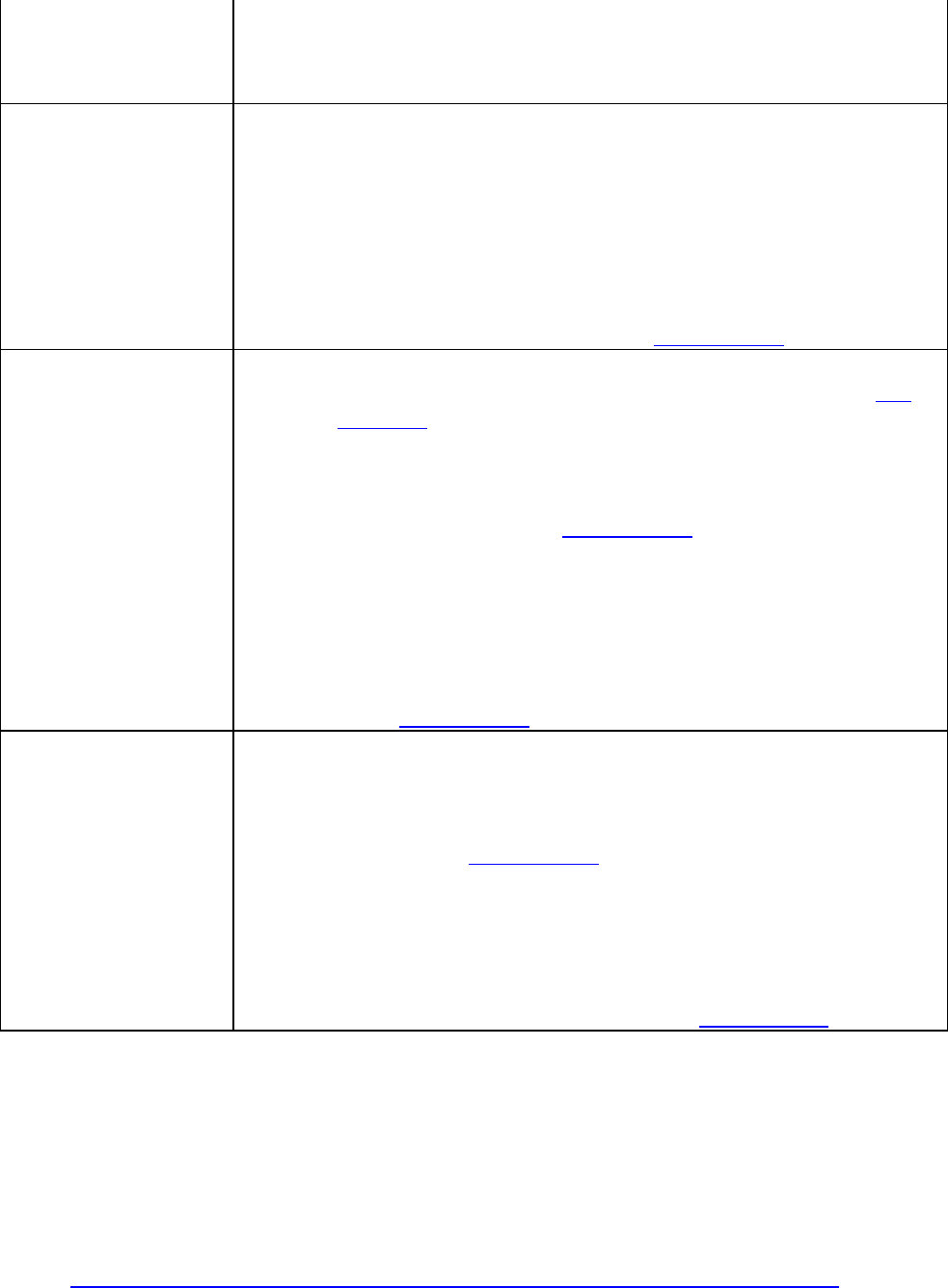
A pupil currently on an
MDS-assisted place at a
CAT
• The CAT may be able to provide this to you if they
currently have access to the Learner Record Service (LRS). If
not, one of the other situations may apply.
A pupil currently at a
state-funded school in
England or Wales
• If your child is moving to an independent school on an
MDS-assisted place, the new school can request for the
UPN via the common transfer file (CTF).
• A CAT may be able to identify this for you. For
example, if they are a member of the Learner Record
System (LRS) and your child is aged +14 then they may be
able to use LRS to identify the UPN.
• Alternatively, parents can request the pupil’s UPN from
their child’s current school (see DfE guidance).
An overseas pupil
• Usually a pupil from overseas will not have been allocated
a UPN but there are exceptions to this as set out in the DfE
guidance.
• If a pupil is moving to a state-funded school then that
state school will issue a UPN. The parent can then request
this from the school and provide it as soon as possible. You
can refer the school to DfE guidance on UPNs when making
the request.
• If a pupil is moving on an MDS-assisted place to
an independent school and has never been in the
state system (or at and independent school that had a policy
of generating UPNs) then the independent school
can generate a UPN. Instructions for how to do this is set out
in the DfE guidance.
A home educated pupil
• If a pupil has ever been in the state-funded education
system (or at an independent school that had a policy of
creating UPNs), they will have a UPN that their previous
school may be able to provide upon request. You can refer
the school to DfE guidance on UPNs when making the
request.
• If a pupil is moving on an MDS-assisted place to
an independent school and has never been in the
state system (or at and independent school that had a policy
of generating UPNs) then the independent school
can generate a UPN by following the DfE guidance.
UNIQUE LEARNER NUMBER (ULN)
17. The Unique Learner Number (ULN) is a 10-digit reference number which is used
alongside and to access the Personal Learning Record of anyone aged 14+
involved in UK education or training.
Providing the school or CAT is a member of the Learner Record Service (LRS),
they can search for and create ULNs. Please see further guidance here:
https://www.gov.uk/guidance/how-to-access-your-personal-learning-record

Alternatively, a pupil can check certifications or results slips from awarding
organisations as, since March 2013, awarding organisations have started to print
individuals’ ULN references on them. Otherwise, a pupil’s current or most recent
learning provider will be able to provide their ULN reference.
Please see annex A for further details on the LRS and ULNs.
UNIQUE CANDIDATE IDENTIFIERS (UCI)
18. This is a desirable but is not needed provided that the pupil’s UPN and/or ULN
have been provided.
A unique candidate identifier (UCI) is a reference that's unique to a
candidate/student and lasts for the duration of their study career. It’s a 12-digit
number followed by one capital letter.
The UCI provide a single identifier for a student regardless of centre, JCQ
Awarding Organisation (AO) and series. It is designed so that learners can be
uniquely identified even if they’re taking qualifications from multiple JCQ AOs,
across multiple series and from different centres. If a learner already has a UCI, it
must continue to be used, even if it was generated for a different centre, a
different candidate number, a different AO or a different year.
We don’t expect CATs to necessarily have these but all independent schools
should have these for pupils that have particular taken qualifications. Please see
here for details on UCIs: https://www.jcq.org.uk/exams-office/entries/unique-
candidate-identifiers-uci/
EQUALITIES MONITORING
Ethnic origin
19. Places at schools and CATs are awarded on merit and grants are awarded to all
those who meet the eligibility criteria. Parents are asked to declare the ethnic
origin of their child, this is optional and purely for monitoring purposes. Where
the ethnic origin has been entered, this should be recorded using the following
abbreviations:
W = White (including British and Irish)
WBC = White and Black Caribbean
WBA = White and Black African
WA = White and Asian

OM = Other Mixed
BC = Black Caribbean
BA = Black African
OB = Other Black
I = Indian
P = Pakistani
B = Bangladeshi
OA = Other Asian (including Korean, Malaysian, Japanese)
C = Chinese
O = Other Ethnic Group
Disability
20. Parents are also now asked to declare whether or not their child has a disability.
Again, this is optional and for monitoring purposes.
PARENTS
21. Any reference in this document to the parents of an aided pupil, a grant holder,
or to a child in connection with the aided pupil scheme, or a child in connection
with the national grants scheme, is a reference to, at the time that the relevant
income is calculated (the date on which the Application Form is signed):
A. the child’s father, or a parent by virtue of section 42 or 43 of the Human
Fertilisation and Embryology Act 2008
5
, and mother where –
i. they live together (whether or not they are married to each other
or have formed a civil partnership
6
with each other), and
ii. the child normally resides with them in the same household; or
B. where sub-paragraph (a) above does not apply, the parent, being either
the father or mother of the child, with whom the child normally resides
and the spouse or civil partner (if any) of that parent where the spouse or
5
2008 c.22
6
Within the meaning of the Civil Partnership Act 2004 c.33

civil partner normally resides with that parent and the child in the same
household; or
C. where neither sub-paragraph (a) nor (b) above applies, the child’s
guardian appointed in accordance with section 5 of the Children Act
1989
7
and the spouse or civil partner (if any) of that guardian where the
spouse normally resides with that guardian and the child in the same
household; or
D. where none of sub-paragraphs (a), (b) and (c) above applies, the person
with whom the child resides in accordance with either:
i. a subsisting residence order made under section 8 of the Children
Act 1989; or
ii. any subsisting court order (other than a residence order) which
specifies who is to have actual custody or care and control of the
child,
and the spouse or civil partner (if any) of that person where the spouse or
civil partner normally resides with that person and the child in the same
household; or
E. where none of sub-paragraphs (a) to (d) above applies and where the
child is not looked after by a local authority for the purposes of section
22(1) of the Children Act 1989, the person with whom the child normally
resides in accordance with any informal care or fostering arrangement,
and that person’s spouse or civil partner (if any) where the spouse or civil
partner normally resides with that person and the child in the same
household.
22. Where a child, aided pupil or grant holder –
A. either has no parents as defined in paragraph 21 or the school or centre
for advanced training is satisfied that no such parents can be found, and
B. is either looked after by a local authority or provided with
accommodation within the meaning of section 105(1) of the Children Act
1989,
he shall be treated as a child whose parents have no income for the purposes of
the Music and Dance Scheme, and any reference to his parents shall be construed
as a reference to the authority or organisation which looks after him or provides
him with accommodation.
23. The local authority is normally regarded as the parent of any child placed with
7
1989 c.41 as amended
foster parents. Such a child is treated for the purposes of the Scheme as one
whose parents have no income and the child may be given an aided place with
full fee remission. In these cases a pupil will also be entitled to maximum
incidental expenses including free school meals.
24. References in this policy to a person who normally resides with a child mean, in
relation to a child who is an aided pupil boarder at a school, a person with whom
the child normally resides when he is not at school.
25. Where a child has been adopted pursuant to an order of a court of competent
jurisdiction, references in paragraph 16(a) and (b) to “father” and “mother” shall
be construed as references to the adoptive parents and not his natural parents.
26. The requirements of this section shall also pertain in respect of any similar
provision pursuant to the Adoption and Children Act 2002 (2002 c.38).
27. In the case of a natural parent who normally lives with, but is not married to, or
formed a civil partnership with, a person who is not the child's mother or father,
an application and declaration of income will be required from the natural
parent alone.
28. In cases where there is actual joint custody or care and control (e.g. the child
spends 6 months with the mother and 6 months with the father) then both
family units should be treated as parents. In the majority of joint custody cases a
child will live with one parent but may spend some time (e.g. school holidays or
weekends) with the other. In such cases the relevant income is that of the parent
with whom the child normally lives.
RELEVANT INCOME PERIOD
29. Declarations of income and other information must be provided in respect of
both parents (where applicable), and the MD1/NGMD1 should be signed by both.
Where only one signature is given parents must state the reason for this.
Schools/CATs should check that it is because either there is only one parent as
defined above, or else that it would not be practicable at the time to obtain the
signature of the second parent. In the latter instance, a declaration of the second
parent's income must still be included in the form.
30. Determination of eligibility on income grounds is based on the income
declaration on MD1/NGMD1. The notes below cover advice on the income
figures to be returned and guidance on the determination of "relevant income"
and the assessment of parental contributions. Schools/ CATs will wish to satisfy
themselves that the amounts declared by parents accord with the notes defining
income and that they are consistent with the information given about
occupation.
31. Declarations of income should normally refer to the relevant tax year, 6 April to
5 April, and in relation to a particular school year, "preceding financial year"
means the financial year preceding that school year (e.g. for the 2020/21 school

year, the preceding financial year is 6 April 2019 to 5 April 2020).
32. Where the parents' income is wholly or mainly derived from the profits of a
trade, business or profession, Schools/CATs should accept declarations related
to the accounting year of that business or profession which ended within the
financial year for which income would normally be declared. In such cases the
preceding financial year will be construed as the accounting year ending before 6
April in the calendar year in which the school year begins. For example, if the
parent's accounting year is 1 February to 31 January, the preceding financial
year (for the school year 1 September 2020 to 31 August 2021) is deemed to be
1 February 2018 to 31 January 2020.
33. As a general principle, definitions of income follow as closely as possible those
used by HMRC (Inspector of Taxes) for income tax purposes and parents must
declare gross income before tax from all sources (except as specified below). In
all cases any income from outside the UK should be included. No deductions
should be made in respect of any allowances made for tax purposes - specifically:
personal allowances; pension or superannuation contributions; donations direct
to charities; covenants; loan interest that qualifies for tax relief; redundancy
payments; and income from abroad.
CALCULATING RELEVANT INCOME
34. The amounts quoted for EARNED INCOME should include:
A. the gross amount of salaries, wages and pension, including earnings
from part-time employment, statutory sick pay, statutory maternity pay,
any sum received as a bonus or commission and profit-related pay (or pay
received by virtue of a "salary surrender/sacrifice scheme"). Any
"benefits in kind" such as free or subsidised housing, meals or company
cars must also be declared, at the amount agreed with Her Majesty’s
Customs and Revenue (HMRC);
B. profits from a trade, business or profession, at the amount of gross
income declared on a completed self-assessment tax return to HMRC for
the year in question (deductions should be made only in respect of capital
allowances, losses
8
and stock relief). The amount of any balancing charges
or stock relief recovery charges should be included. Where a parent is
self-employed, drawings should not be included as part of relevant
income as these could be unused profits from previous years. If, however,
8
HMRC (Inspector of Taxes) allows a business loss to be dealt with in several ways, the most
common being to offset against other tax liabilities for the year in question or to be carried over and
set against either profits or other tax liabilities in a subsequent year. In such cases School/CATs
should ascertain which course of action is being followed and determine relevant income on the same
basis.

a parent is a company director (whether of his own company or not)
drawings from that company may or may not be taxable. If the relevant
self-assessment returns are not available, provisional figures should be
derived from the audited business accounts or from a statement signed by
the parents’ accountants.
C. grants or allowances made toward boarding school fees (including from
parents who are members of HM Forces).
35. Members of the clergy must include any monies received in addition to their
stipend (i.e. the amount shown on form P60) for which they receive separate
payments – e.g. for weddings, funerals etc. Income from these sources will be
assessed separately on their relevant self-assessment tax return. The provision
of accommodation for the clergy is also generally regarded as being non-taxable
provided they are a full time minister of religion and it is customary for the
accommodation to be provided (for example, a Vicarage). If, however, the
minister of religion is a teacher with accommodation provided, this is regarded
as a benefit in kind for tax purposes. The clergy do not, however, need to include
any non-taxable part of the heating, lighting, cleaning and garden upkeep
allowance as part of their total income where their duties are that of a full time
minister of religion. This exemption applies to members of the clergy who have
earnings at an annual rate (including all of their benefits in kind) of less than
£8,500. If you are in any doubt about whether specific benefits in kind are
taxable or not see the HMRC website at https://www.gov.uk/expenses-and-
benefits-a-to-z.
36. Where the amount of earned income declared does not include superannuation
or other pension contributions paid during the year, the total of those
contributions must be declared separately.
37. Amounts declared for occupational pensions should not include tax-free lump
sum payments made from pension funds.
38. Sums received from Tax-free State benefits as stated on Income Tax: Tax-free
and taxable state benefits - GOV.UK (www.gov.uk) should be entered separately,
but will not count towards parents’ relevant income:
39. Income from the letting or sub-letting of property must be declared at the
amount of the net profit agreed with HMRC (Inspector of Taxes). As a
general rule, the amount of any Loan Interest must be included in the calculation
of relevant income even though this may be shown as deductible for tax
purposes on a parent’s self-assessment return. This is because such an amount
is regarded as part of normal outgoings for the purposes of the MDS. However,
tax relief on Loan Interest to purchase business premises (i.e. premises which
are not a person’s main residence or premises/property used solely for business
purposes) can be deducted from the relevant income calculation. There are also
occasions when Loan Interest can be used to reduce the amount of the income
from the letting or sub-letting of property which is declarable as relevant
income. If you are in any doubt, you are advised to include the Loan Interest in

the relevant income calculation in the first instance and to advise the parent to
provide a document from HMRC which proves that Loan Interest relief has been
given under a section of the Income and Corporation Taxes Act 1988 other than
section 370. In this event you should approach the DfE for further guidance.
40. Rent-a-Room Relief was introduced to provide for tax relief to be given to
owner occupiers who let furnished accommodation in their only or main home.
It is available only where the letting income for a particular tax year is liable to
tax (formerly under Schedule D) and applies to gross rents received by an
individual up to a certain limit. Tax relief given under these arrangements
should be disregarded for the purposes of calculating relevant income. Evidence
of income received under any such letting arrangement should be obtained from
either audited accounts or the relevant rent book(s). All income from such
lettings must form part of parents' total income.
41. Parents should declare the gross amount of any interest from savings actually
received during the financial year. Schools/ CATs should, if necessary, gross up
any net amount in order to assess income. The necessary adjustment for such
income is to multiply the figure entered by 100/80. However, non-taxpayers are
able to apply to have their interest paid tax-free. In such cases the formula will
not need to be applied but Schools/ CATs may ask to see documentary evidence
that the parent or child receives the interest free of tax.
42. All other investment income (e.g. share dividends, interest on annuities and
insurance policies) should be entered gross of tax. Interest from National
Savings & Investments should also be declared. If tax was deducted at source,
parents are asked to add in the amount of tax paid or tax credit notified.
43. The amount of any inheritance or legacy does not itself count as relevant
income but any interest received in the financial year under consideration as a
result of the investment of an inheritance or legacy does count as relevant
income. The value of any shares received as an inheritance or legacy would not
count as relevant income but if these were to be sold there could be a declarable
capital gain and could count as relevant income. Please check at Tax when you
sell shares - GOV.UK (www.gov.uk) for further information on allowances.
44. Income from maintenance or child support agreements should be entered.
Parents receiving maintenance payments or child support under a court order or
separation agreement or arrangements made by the Child Maintenance Service
(CMS), (or predecessor body) should enter the amount required to be paid in the
year. If parents receiving such payments recover tax on the payments made, this
should be declared.
45. Amounts entered under "any other income" in row m) should include any sums
received as redundancy payments, "golden handshakes", company allowances
towards school fees etc. However, the following should be disregarded when

relevant income is calculated:
A. redundancy payments of up to £30,000
9
(if payments received exceed
that amount the excess over £30,000 should be recorded in row l) and
included in the relevant income);
B. the amount of any income in the form of a tuition fee loan, maintenance
loan, maintenance grant, special support grant or disabled students’
allowances that is received by a parent who is a student;
C. any allowance paid by an adoption agency under the Adoption and
Children Act 2002 or previous similar enactment as amended;
D. custodianship, residence or similar allowances or assistance paid by a
local authority under the Children Act 1989 as amended;
E. capital gains up to £12,300 per parent (in the 2022-23 financial year);
F. any amount paid in respect of foster children;
G. awards and expenses received from the National Youth Dance Company.
CURRENT YEAR ASSESSMENTS (CYA)
46. Parents may wish to contact to ask for a CYA if they know or suspect that their
income will be appreciably lower in the next tax year than it was in the last. You
may need to ask for documentary evidence of the circumstances that are
expected to lead to the reduced income and agreement is not automatic.
47. A decision to allow a CYA can be taken by Schools/CATs in some circumstances
but in other circumstances the Departments permission must be sought .
48. The types of case in which a decision to allow a CYA to be adopted can be taken
by are ones in which:
A. one of the grant holder’s parents has died after the relevant income has
been calculated on a preceding financial year basis but before the end of
the current financial year. If schools/ CATs are satisfied that the income
9
Consideration should be given to when people are made redundant they often receive one cheque
which covers the redundancy payment but also other payments, e.g. payment of salary, bonuses,
holiday pay, superannuation lump sums, etc. Some of these payments are taxable and some are not.
If in any doubt, you should request a breakdown of the payments made and of the taxable position of
each element.

of the surviving parent for the whole of the current financial year plus that
of the deceased parent for part of it is likely to be less than their
aggregated income in the preceding financial year you can accede to a
parent’s request for a change to a CYA; or
B. Schools/ CATs are satisfied that the relevant income in the current
financial year is, as a result of some event beyond the control of the grant
holder’s parent(s) (other than the breakdown of a marriage), likely to be
not more than 85% of that in the preceding financial year.
49. The types of case in which Schools/ CATs are required to seek the DfE’s
permission for a CYA to be adopted are ones in which:
A. the request for a CYA is prompted by the breakdown of the parents’
marriage after form MD1/ NGMD1 has been signed with the result that
they now live apart; and
B. the anticipated fall in income is by less than 15% but the parents maintain
that financial hardship would nevertheless result from a contribution
towards the fees assessed by reference to the preceding financial year’s
income.
50. Correspondence to the DfE concerning requests for a CYA should include
detailed information about all the circumstances, financial or otherwise, which
have led to the request being made. In cases involving marriage breakdown, the
exact date of the parents’ separation should be stated. Documentary evidence
of the circumstances should not be provided to the DfE but should be requested
and retained by the CAT.
51. In all cases involving a CYA, the income must be determined initially on a
provisional basis and the determination reviewed when information on actual
income in the current year becomes available. Schools/ CATs are strongly
advised to make parents aware at the outset that a CYA will be finalised on the
basis of actual income and that although this may result in their receiving a
refund of overpaid parental contribution if the income has been overestimated,
any underestimate of their relevant income will result in their having to make an
additional payment to bring the parental contribution up to the required level.
Schools/ CATs should also explain to parents that, once advantage has been
derived from such a CYA, assessments must continue in subsequent years on the
same basis unless the Department directs otherwise. Requests from parents
who have benefited from a CYA to be allowed to revert to the normal previous
year basis for assessment must be referred to the DfE.
ESTIMATES OF INCOME
52. Some parents (generally only those who are self-employed) may not be able to
provide a declaration of actual income in the preceding financial year before the
beginning of the school year. The rules provide that in those circumstances the
CAT may make a provisional assessment pending submission of actual figures.
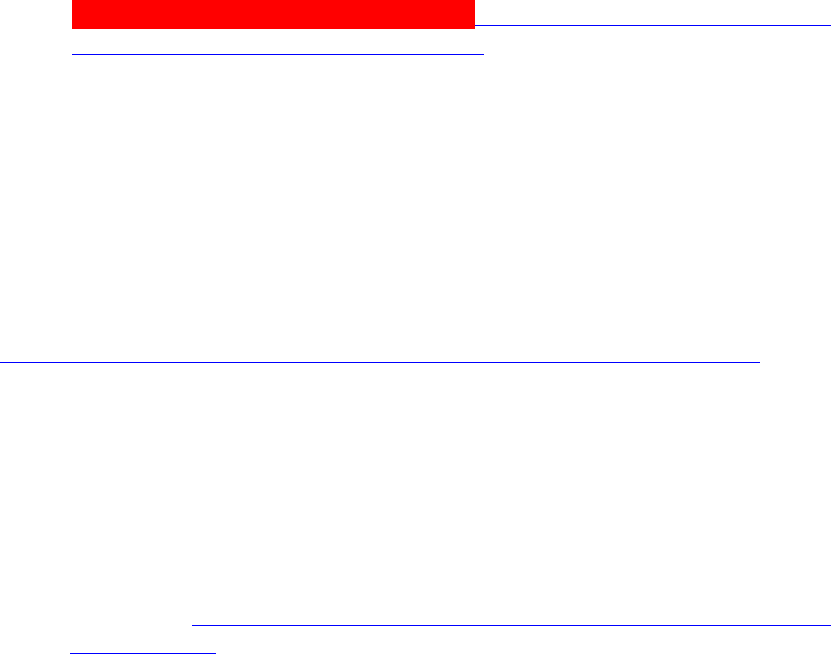
53. Where estimates are provided, parents need to supply the most recent figures
available and make clear when final figures will be available. Schools/ CATs
should ensure that they follow up all on all estimated figures.
INCOME OF DEPENDENT CHILDREN
54. Parents are asked to declare the gross amount of all unearned income received
by children (including the grant-holder) living in the same household who are
wholly or mainly financially dependent on them. Unearned income means any
income that does not arise from gainful employment. Parents need not declare
dependent children’s income that is in the form of:
a) support from the 16-19 Bursary Fund (in England) or Education
Maintenance Allowance (in Scotland, Wales or Northern Ireland);
b) student finance e.g. tuition fee loan, maintenance loan, maintenance grant,
special support grant or disabled students’ allowances;
c) awards, scholarships, prizes and expenses including any received from
the National Youth Dance Company or a National Youth Music
Organisation.
d) Tax-free State benefits as stated on Income Tax: introduction: Tax-free and
taxable state benefits - GOV.UK (www.gov.uk)
ALLOWANCES FOR DEPENDENT CHILDREN AND OTHER RELATIVES WHO LIVE IN
THE SAME HOUSEHOLD
55. Parents are asked to list all dependent children and other relatives living in the
household. Children who are students in higher or further education may
normally be regarded as dependants in this context, even though for much of the
year they may be living away from the household.
56. Children in receipt of one or more of Tax-free State benefits as stated on
Income Tax: Tax-free and taxable state benefits - GOV.UK (www.gov.uk) will be
considered as a dependant
57. The following groups do not count as dependants:
a) children or other relatives who do not normally reside in the same
household as the parents and the grant applicant;
b) relatives (excluding children)in receipt of Tax-free State benefits as
stated on Income Tax: Tax-free and taxable state benefits - GOV.UK
(www.gov.uk)as per paragraph 38; children in receipt of one or more of
the listed benefits are to be counted as dependants.
c) foster children;
d) spouses or civil partners.
MAINTENANCE AND CHILD SUPPORT PAYMENTS ALLOWANCES FOR DEPENDANTS
WHO DO NOT LIVE IN THE SAME HOUSEHOLD
58. Parents are asked to record any child support or maintenance payments they
make in compliance with an existing Court Order, a separation agreement (e.g.
Deed of Separation) or under arrangements made by the Child Maintenance
Service (CMS) (or any predecessor body). Where a parent makes voluntary
payments, these should not be taken into account.
59. Any such payments received should be declared along with other income.
60. The CMS calculates the amount of Child Support Maintenance that absent
parents must pay towards the upkeep of their child or children. It is not now
normally possible for parents who do not already have a Court Order for child
maintenance to go to court to obtain such an order. Instead, parents will need to
apply to the CMS for an assessment of Child Support Maintenance. Such
maintenance should normally be declared whether or not the assessment is
being complied with but exceptions to this rule can be made. Parents should be
advised that the CMS has a collection service if they are experiencing problems
with the receipt of maintenance.
61. A maintenance payment for the purposes of the national grants scheme means a
periodical payment which is made by one of the parties concerned to or for the
benefit and for the maintenance of the other party, or by one or both parents or
another person for the benefit, maintenance or education of any of the children.
Any tax recovered on these payments must be declared.
62. Maintenance payments or separation allowances under a Court Order or
separation agreement should normally be declared as income regardless of
whether or not the order/agreement is being complied with, but exceptions can
be made. Permission should be sought from the Department to waive the rule in
exceptional cases such as those, for example, in which the person who should be
complying with the Order or agreement has taken up residence abroad and has
therefore placed himself or herself beyond the reach of the British judicial
system or in which a Court or the CMS has notified in writing its acceptance that
the person cannot pay the fees because of some financial misfortune such as
redundancy or bankruptcy.
VERIFICATION
63. Parents or Guardians must provide documentary evidence of the earned income
figures entered on form MD1/NGMD1, schools/CATs should ensure that copies
of the following documents are available if required by the DfE for inspection, as
part of the annual Audit Survey of the MDS for example:
a. where income is derived from salary, wages, etc:
i. Form P60 (or similar document) supplied by employers at the end
of the financial year;
ii. in cases where parents are in receipt of profit-related pay (or of
payments made by virtue of a "salary surrender scheme"), an
authenticated statement from the employer. Form P60 may
indicate where such schemes are in operation, for example by
recording a high level of salary/pay for NI purposes);
iii. in cases where Form P60 does not show superannuation
contributions and gross pay (in addition to taxable pay), a copy of
the relevant March pay advice;
iv. in cases of salaried directors of private limited companies, the
relevant self-assessment return.
b. where parents are self-employed:
v. copies of the completed self-assessment return made to HMRC and
of a form such as Form SA302 which HMRC issues to confirm its
agreement with the figures on the self-assessment return or to
record any amendments which it has made to them;
vi. if the completed self-assessment return is not yet available, a copy
of the audited business accounts for the previous financial year or
for the business accounting year which ends in that financial year,
or a statement by the parents' accountants. The actual profits for
that year must be computed and stated for the purpose of national
grant assessments. Previous tax assessments may also be
submitted for making comparisons. Where final figures for the
financial year in question are not available schools/CATs will need
to undertake provisional assessments of income pending the
submission of final accounts.
Note: Drawings from a business should be treated as follows. Where a
parent is self-employed, drawings should not be included as part of
relevant income as these could be unused profits from previous years. If,
however, a parent is a company director (whether of his or her own
company or not) drawings from that company may or may not be taxable.
In such cases HMRC should be asked to provide a statement showing
taxable and non-taxable drawings.
64. Schools/CATs should determine what documentary evidence is required to
verify income from pensions, investments or other unearned income and ask
parents to supply copies or provide documents for inspection.

65. Self-assessment of income tax. For the majority of assessments where parents
are self-employed, Schools/CATs may need to make a provisional assessment
(using figures from the last available audited business accounts etc. as a basis)
until such time as the assessment can be finalised. Ideally, the finalisation should
be based on figures shown on a form such as form SA302 issued by HMRC. This
validates a self-assessment return by confirming the amount of tax due and paid
and parents should be asked if they are able to provide such confirmation. The
ideal situation is one in which parents are able to do so but if they cannot, an
assessment can nevertheless be finalised because a completed self-assessment
return forms the legal charge to tax and can be used as a proper basis for
determining income.
66. "Benefits in kind" are also subject to the self-assessment rules and figures will
need to be derived from the relevant parts of a self-assessment return to HMRC.
Employers are required to provide employees who receive certain benefits in
kind with a form P11D showing a breakdown of those benefits and schools/
CATs should ask to see such a form. For employees, tax on benefits in kind will
usually be collected through an adjustment to the tax code. If the value of any
benefits a parent gets from his employer exceeds his personal allowances, he or
she will normally receive a tax code "K" and the excess over his allowances will
be added to the income each pay period.
67. Parents must supply copies of documentary evidence to support all entries of
income. Schools/CATs should retain copies of all documentation relating to
major sources of income for at least 2 years for possible inspection by the DfE
but with regard to minor sources of income they have a choice; they can either
retain copies of the documentary evidence or can inspect it, check that the
amounts agree with entries on the MD1/NGMD1, sign the form to certify that
satisfactory corroborative documentary evidence has been seen, and return the
documents to the parents.
68. Parents should also provide evidence of other income, including proof of taxable
and non-taxable social security benefits listed, evidence of the income of the
dependants listed, evidence of dependants (for example birth certificates) listed
and evidence of any payments included in the form. The School/CAT reserves
the right to seek additional evidence if they deems it necessary.
DECLARATION
69. Both parents (where applicable) should sign the declaration on the form.
CALCULATION OF RELEVANT INCOME (FOR SCHOOL/CAT GUIDANCE)
70. The total of relevant income is arrived at by adding the amounts entered on the
form for the income of parents and dependent children, and by making the
following deductions:

A. any income from non-taxable social security benefits listed;
B. an allowance in respect of each child or other dependent relative living in
the household,
i. for CATs only- including the child in respect of whom the
application is being made, who, at the time that the relevant
income is calculated, is wholly or mainly financially dependent
upon the parent(s)
ii. for schools only- other than the child (the Aided Pupil) in respect
of whom the application is being made, who, at the time that the
relevant income is calculated, is wholly or mainly financially
dependent upon the parent(s);
C. for each parent in receipt of the blind person's tax allowance;
D. the net amount of any maintenance payment or separation allowance paid
under a court order or separation agreement or in accordance with
arrangements made by the CSA;
E. any income entered for-
o redundancy payments of up to £30,000. If payments received exceed
that amount the excess over £30,000 should be included in the
relevant income
o the amount of any income in the form of tuition fee loan, maintenance
loan, maintenance grant, special support grant, disabled students’
allowances that is received by a parent who is a student;
o any allowance paid by an adoption agency under the Adoption and
Children Act 2002 or previous similar enactment;
o custodianship, residence or other allowances paid by the local
authority under the Children Act 1989;
o capital gains up to £12,300 (for each parent) for tax year 2021-2022;
o any amount paid in respect of foster children;
o the 16-19 Bursary Fund paid in respect of children who remain at
school or in education after the age of 16.;
DECISION ON AMOUNT OF GRANT
71. The cost of the provision will not necessarily be the same as the size of the
maximum grant. In some cases, the cost of all training and other activities the
child wishes to do may exceed the maximum grant (for example where the child
is a multi-instrumentalist). In other cases, the cost of the child’s activities may be
less than the size of the grant to which the child is entitled. In either case, the
size of the grant remains the same.
72. Where the cost of provision exceeds the grant, parents (even parents of
maximum grant holders) should be asked to contribute the additional cost. If
they are unable or unwilling to do so, the provision agreed for the child should
be reduced so that it is affordable within the amount of grant.
73. Where the cost of provision agreed for the child is less than the grant, parents
will not be expected to make any contribution. Unused grant by one child may
not be reallocated to another child.
74. Schools/CATs may wish to advise parents who believe they might have difficulty
making their assessed contribution as to possible sources of help, either from the
centre itself or from other (charitable or sponsorship) sources.
75. It should be noted that a grant holder may use some of the grant for training-
related activities out with the schools/CAT (e.g. private coaching, performing,
musical discovery) provided that such activities form part of their ITP.
INDIVIDUAL TRAINING PLANS (ITPs) AND DfE RETURNS
76. ITPs must be drawn up for each grant holder, and will need to be agreed by the
students, teachers, parents/guardians and CAT, with provision for independent
mentoring support as appropriate. The DfE is not prescribing ITPs in detail as
these will differ somewhat from one CAT to another. The DfE may request copies
of all national grant holders’ ITPs or copies of a sample of ITPs at any time.
77. CATs will need to ask parents and grant holders to sign up to an ITP which will
set out the programme of training, study, work and related activities that the
grant holder will undertake. Opportunities should be provided to review
progress and help the child achieve their best. CATs may directly or indirectly
employ third parties to deliver supplemental training activities that are detailed
in the ITP. The DfE will ask CATs for progress reports on individual grant holders
to ensure that they are receiving the training they need and that the grant is
being used in the way for which it is intended. The request for progress reports
will be issued towards the end of the school year in question.

78. CATs are requested to provide NGAC and/or the DfE with whatever other
periodic returns and information the Secretary of State may require. In most
cases this will be covered by the above mentioned forms but other statistical and
factual returns may also be required from time to time.
79. Where a parent has an insurance policy which is specifically for the payment of
school fees then the amount to be declared is the amount payable under the
policy for the academic year for which the application is being made. If the policy
provides for payment of part of the school fees for a child, then only that part of
the fees which is not to be paid by the policy will be regarded as the basis for
calculating fee remission under the Scheme. Where the policy covers the whole
amount of the tuition fees a first-time applicant is not eligible for selection for an
aided place. Where an insurance policy providing for payment of the whole
amount of a pupil’s school fees comes into existence for a pupil awarded an aided
place in an earlier school year the pupil will continue to be regarded as holding
an aided place (unless the parents voluntarily relinquish it) but will be ineligible
for any fee remission or for the reimbursement of any other expenses by the
Scheme for as long as the insurance policy continues to provide for the payment
of the entire fees.
80. The types of policy concerned are those which stipulate that the company shall
pay the school fees, in whole or in part, to the school in respect of the pupil. This
does not apply to other types of savings plans the taxable benefits from which
should be included in the relevant income calculation.
81. Grant for the cost of journeys between home and school is limited to travel by the
following means:
A. public transport (train, bus, boat, air or hovercraft services available to
the public);
B. transport arrangements approved by the Department at the request of a
school (see Note 71 below);
C. transport provided by a local authority (Section 32 of the Transport Act
1980, as amended, provides that local authorities may convey other
passengers on their school buses and may charge for that service).
67. For day pupils, assistance may not be given unless the journey to school is
more than 3 miles (4.8 kilometres) by the shortest practicable walking route.
Where journeys are in excess of 25 miles (40 kilometres) each way, grant will
be payable only for the proportion of the cost of the journey related to 25
miles (40 kms.) travel each way (e.g. for a journey of 34 miles (54.4 kms.),
grant would be payable on 25/34 (40/54.4) of the cost).
68. For a full boarding pupil, grant may be paid towards expenditure reasonably
incurred in respect of up to twelve single journeys made in the school year to
or from his home or to visit parents, guardians or other relatives. If reduced
or concessionary fares are available for such journeys, full use should be
made of them and, if they are available but not taken advantage of, schools
should only reimburse pupils at the reduced rate. Where the expenses are in
relation to travel by air, any excess over the cost of available boat, hovercraft
or train services (including any concessionary fares) should be disregarded.
If a pupil travels to a place other than his home, schools should reimburse the
pupil the costs of travel to his home if that is a lesser amount and, if a pupil
travels outside the British Islands (as defined in Note 15), only the costs of
travel between the school and the port, hover-port, airport or Channel Tunnel
terminal should be reimbursed.
69. For a weekly boarding pupil, grant may be paid in respect of all journeys
between home and school (provided that the journey to school is more than 3
miles (4.8 kms.) by the shortest practicable walking route and subject to the
conditions in Note 66). Where journeys are over 50 miles (80 kilometres)
each way, grant will be paid for a proportion of the cost of the journey (e.g.
for a journey of 62 miles or 99.2 kilometres grant would be payable on 50/62
(80/99.2) of the cost.
70. Grant may also be paid towards expenditure reasonably incurred in respect
of up to three return journeys within the British Islands made in the course of
a school year by a pupil visiting universities and/or other HE or FE
institutions for interview or, at the institution's invitation, other
pre-selection gatherings for prospective students. Grant is usually limited to
the cost of journeys by public transport but is sometimes paid in respect of
journeys by private car, as described in note. No assistance is available
towards the costs of overnight accommodation. When the expenses are in
relation to travel by air, any excess over the cost of available boat, hovercraft
or train services (including any concessionary fares) should be disregarded.
Pupils should be asked to provide their letter of invitation from the
institution concerned when claiming grant. For grant purposes, these costs
should, if applicable, be aggregated with the eligible costs of transport
between home and school and the travel grant payable will be the total cost
less any required parental contribution.
71. The transport arrangements likely to be approved by the Department are
those where a school itself operates, or is a party to the operation of, special
bus or mini-bus services. Applications to the Department for approval of
such travel arrangements should include brief details of the transport
arrangements and information about the fares charged. The Department will
not normally approve transport by private car for the purpose of paying
travel grants, although exceptions may be made in cases of severe physical
disability or where no other usable means of transport exists. Where travel
by car is approved by the Department in response to a written request from a
school, schools should note that the public transport rate (currently 24p per
mile) applies only to journeys when the aided pupil is in the car and is not
payable in respect of a parent's journey home after delivering the pupil at
school or back to the school to collect the pupil.
72. The amount of travel grant (per pupil) will be the actual cost in the school
year of the eligible journeys described above less any parental contribution
which may be required, assessed in relation to the relevant income for the
aided pupil in question. The amount of the parental contribution due is set
out in the appropriate table. Where parents are claiming travel by public
transport for 2 or more aided pupils the amount of parental contribution in
the appropriate column is for each pupil. However, in cases in which travel
grant is claimed in respect of travel by more than one aided pupil by private
car, neither the public transport rate of 24 pence per mile nor the parental
contribution is to be multiplied by the number of pupils transported.
73. Travel grant may be paid by a school at any time during the school year or
immediately before it but any overpayments or underpayments resulting
from payments on account must be corrected by payments to or from the
school within 3 months of the amount of travel grant due being finally
determined.
74. When paying travel grants, schools should satisfy themselves (e.g. by
recourse to declarations signed by parents, inspection of tickets, and/or
consultation of local transport fare tables) that:
a. the journeys undertaken were eligible for grant aid;
b. the mode of transport and route used and the fares incurred were reasonable
in the circumstances and took full advantage of any reduced fare levels
available such as season tickets and children's fares. Pupils are expected to
make use of a Student’s Railcard or similar special offers the cost of which
may be included in the travel costs for which grant is payable where its use
results in a net saving in the amount claimed.
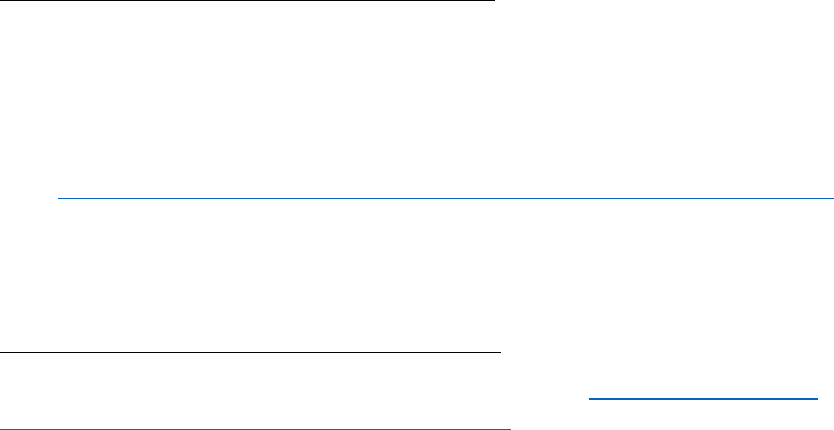
ANNEX A- FURTHER INFORMATION FOR CATs ON ULN (for School/CAT use only)
Guidance for schools and CATs on LRS and ULNs
In order to search and create ULNs for pupils at your schools or CAT, your institution
must be a member of the Learner Record Service (LRS). Once you are registered, you
will be able to search and create ULNs (for those pupils where a ULN does not already
exist). Instructions on the services provided in LRS, including being able to enter pupil
information to find pupils’ ULNs, can be found
here: https://www.gov.uk/government/publications/lrs-registration-documents
Alternatively, for CATs only, where pupils are attending a learning provider (e.g., a
school or college) that are registered with LRS, a parent or pupil can request their ULN
from that institution.
How does a learning provider register with LRS?
The application to register with the LRS is available here: How to register on the
Learning Records Service - GOV.UK (www.gov.uk) – it’s the link called ‘LRB registration
and agreement form’.
The organisation will need to be registered with the UK Register of Learning
Providers in order to apply. They will need to provide their:
• UK Provider Reference Number
• Information Commissioner’s Office (ICO) number
• charity number if they are a registered charity
• company number if they are registered with Companies House
For the question ‘Please choose which describes your purpose for access’ they will
need to select ‘Other’ and then state that they need access for the Music and Dance
Scheme.
They will need to nominate a ‘super user’ who will manage account access for their
organisation – their email address must be for an individual (shared mailboxes won’t be
accepted) and the domain should be the same as the organisation website.
Finally, the agreement (starts on page 7 of the link above) will need to be signed by one
of the following people (as applicable):
• the head / principal listed on Get Information About Schools
• a trustee listed on the Charity Commission website
• an ‘officer’ or ‘person with significant control’ listed on the Company
House website

The form must be hand signed or digitally signed (with stylus) – we can’t accept typed
signatures at this time. The completed document (form & signed agreement) should be
returned to the service desk at [email protected]
This guidance should help to ensure that the application is processed as quickly as
possible. There are additional notes throughout the form and if they have any further
questions about how to complete it then they can contact our service desk (details on
page 1 of the form).
